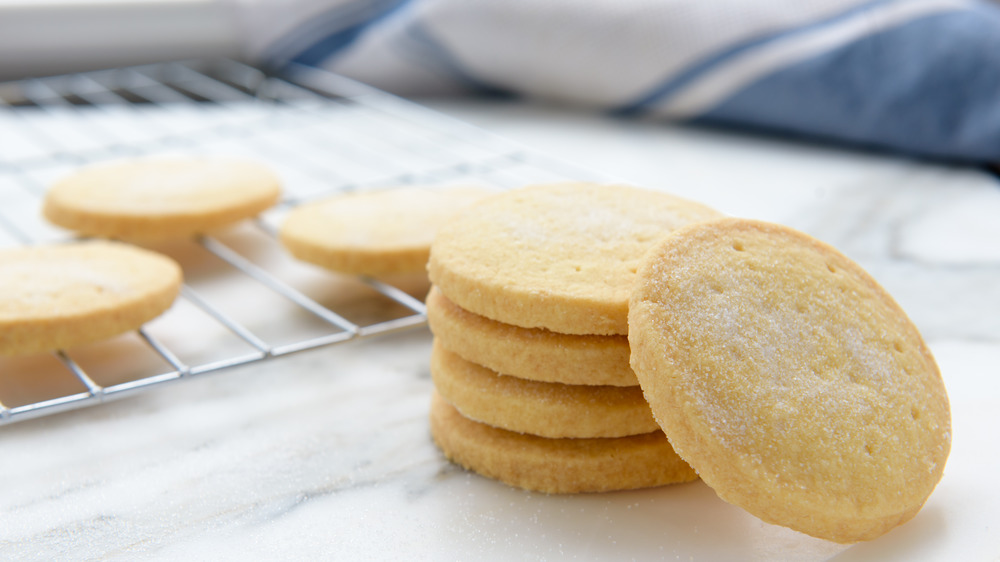The Surprising Way These Ingredients Are Impacting Your Cookies
When the weather outside is frightful, there's nothing quite as delightful as an afternoon spent baking cookies. From beating the egg to rolling out the dough to licking the bowl, it's a fun and easy way to pass the time. Most importantly, let's not forget that the end result is cookies! But have you ever noticed that your homemade cookies aren't quite as pretty as the ones in the recipe photos? Of course, what matters most is that they taste yummy. But on the other hand, if you've put in the time and didn't leave out any ingredients or mess up the instructions, why shouldn't your cookies look Pinterest-perfect?
Blame your recipe rather than yourself because more often than that, the ingredients list and instructions are just too vague. Recipes usually don't explain exactly what type of sugar to use, or what temperature the butter should be at, and these two factors both impact the way the cookies bake, according to Penny Stankiewicz, chef-instructor at the Institute of Culinary Education. In an interview with Mashed, she explained how to make the best decisions about these two cookie recipe essentials.
How to choose the right sugar and butter for your cookie recipe
The most important ingredient in a cookie, of course, is the sugar, and if you've ever wandered through the baking ingredients aisle in the grocery store, surely you've noticed that there are many different types – powdered, fine and coarse; white, light brown, and dark brown. So which is best? It actually depends on what kind of cookie texture you're going for, Stankiewicz said. "The type of sugar you use will also impact the final cookie," she emphasized. "Depending on the other ingredients in the recipe, if you use all white sugar, the cookie will likely be more crunchy; more brown sugar and they'll be chewier. Brown sugar or demerara sugar both have molasses in them, but demerara will act more like white sugar in a recipe, while still bringing some of that deep molasses flavor to the cookie."
Equally important, Stankiewicz added, is the temperature of the butter. Recipes should state if butter should be cold, room temperature, or melted before blended with the other ingredients – but, they rarely do. "The temperature or consistency of the butter used will change the nature of the cookie," Stankiewicz explained. "For example, if you want a chewier cookie, use melted butter."

